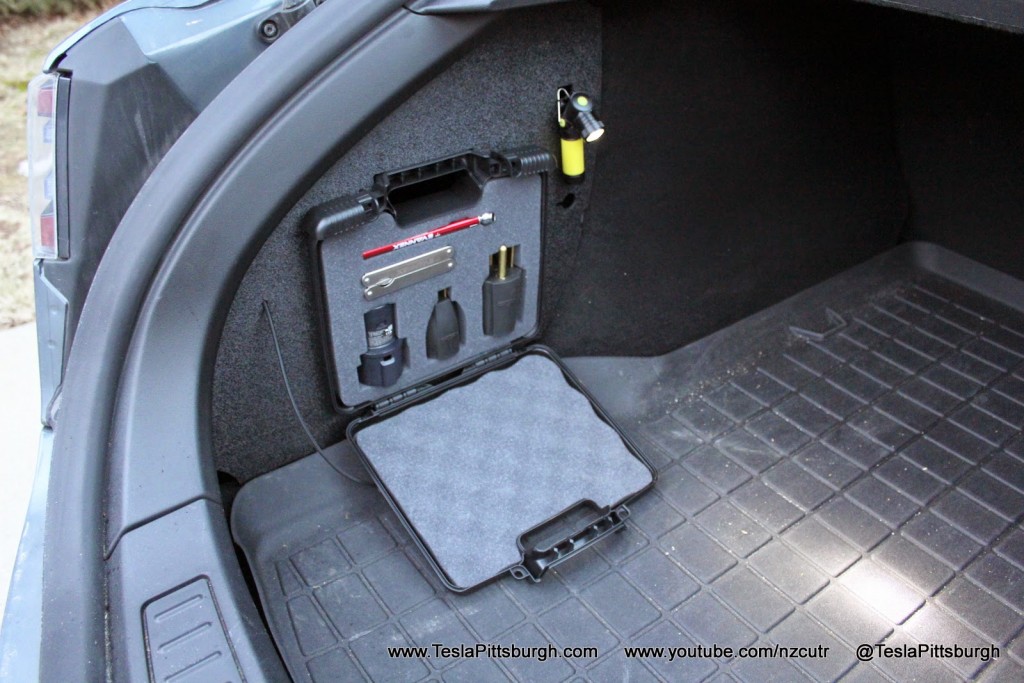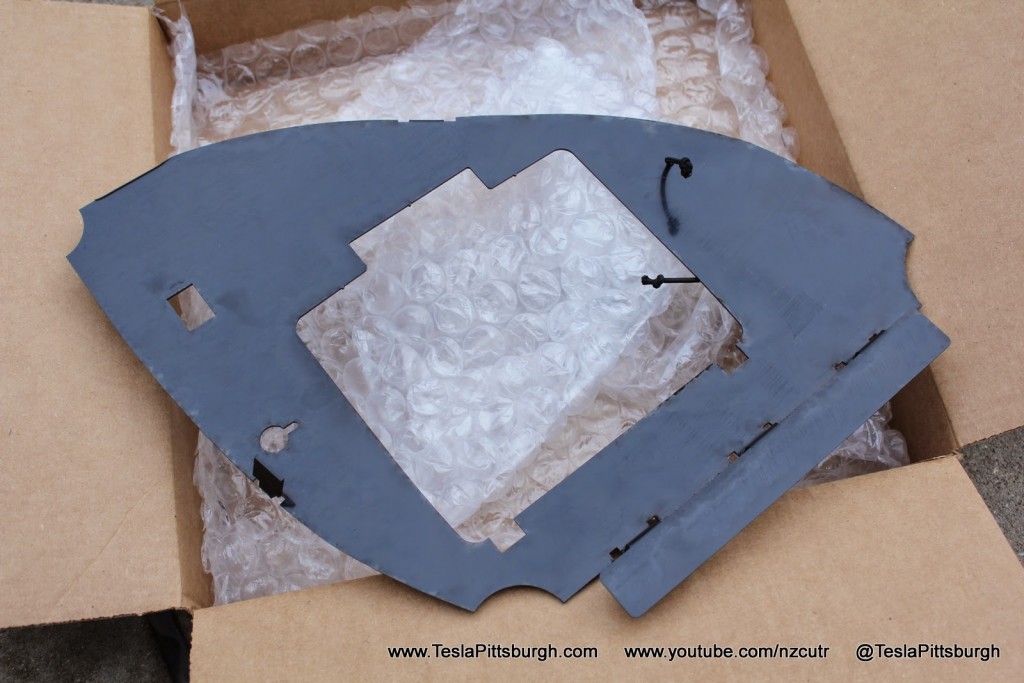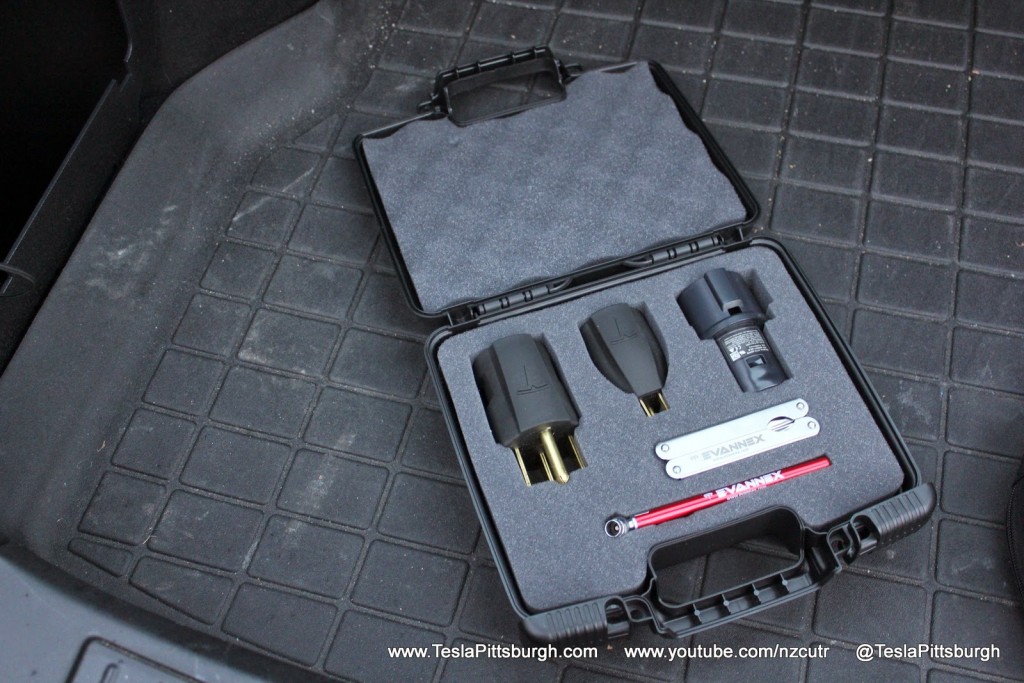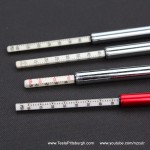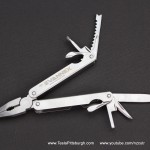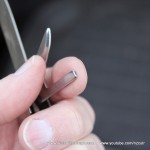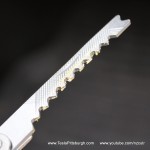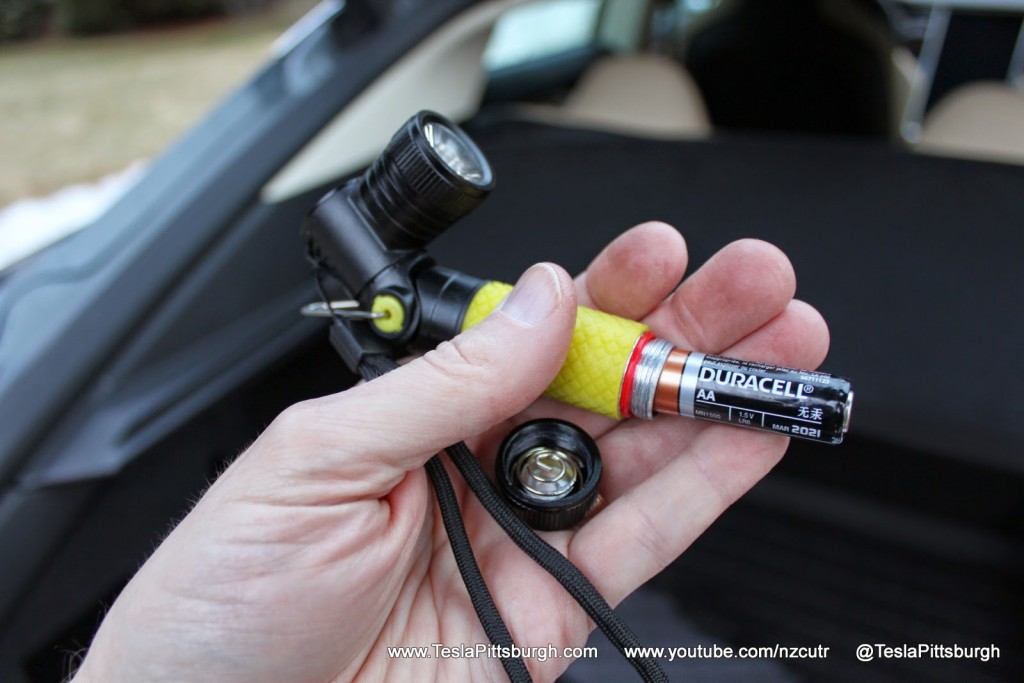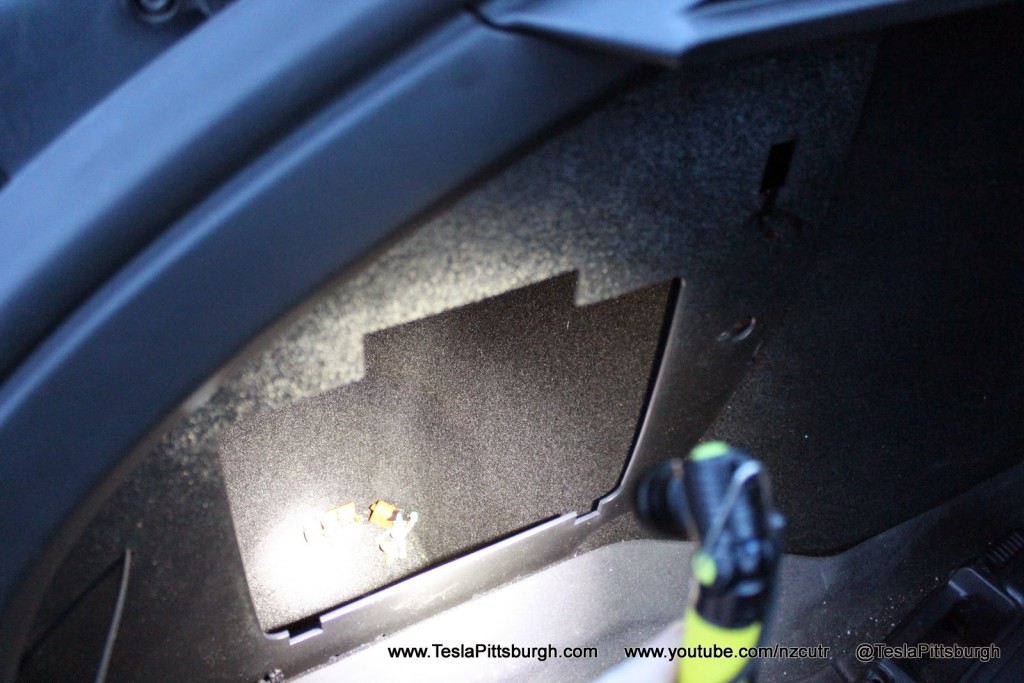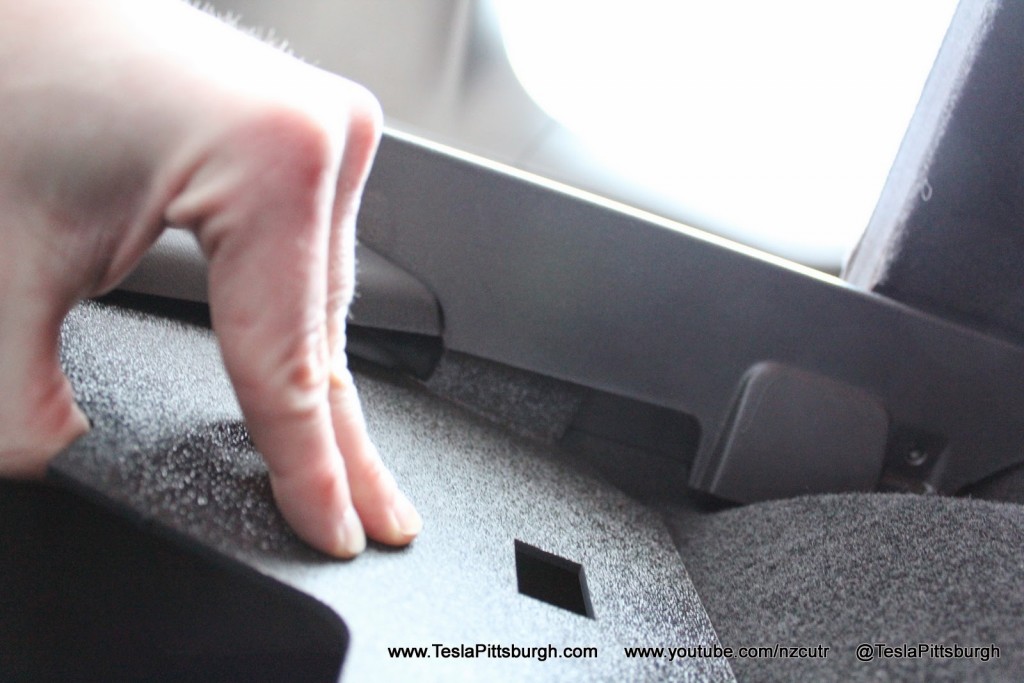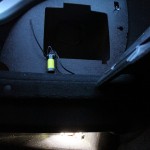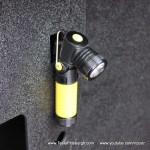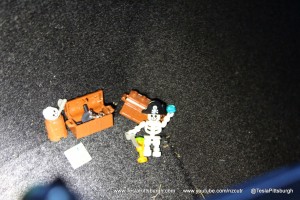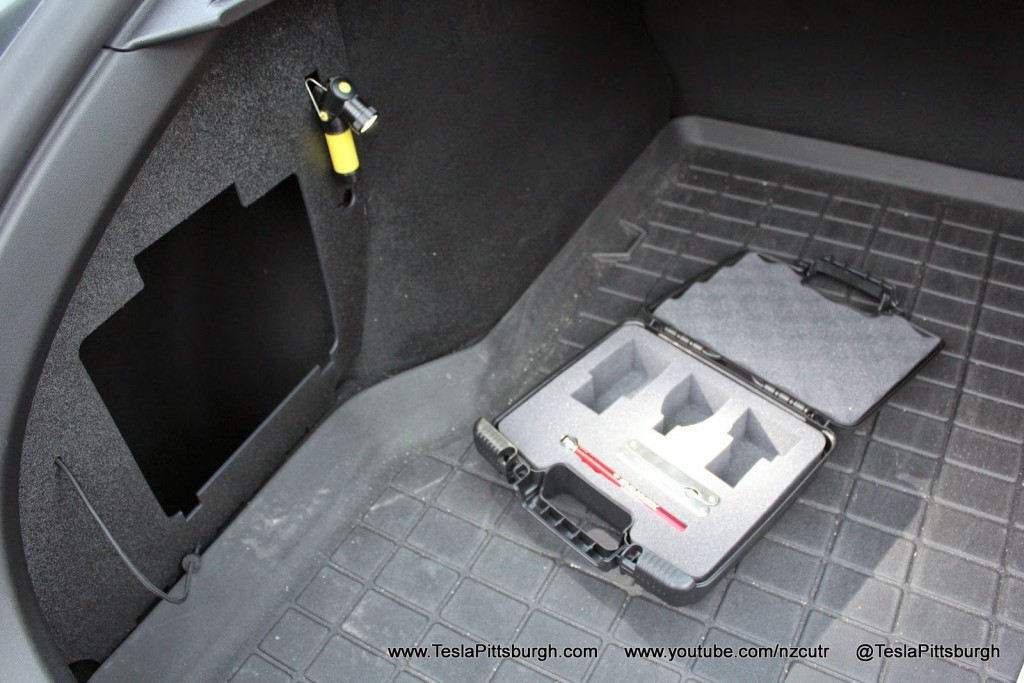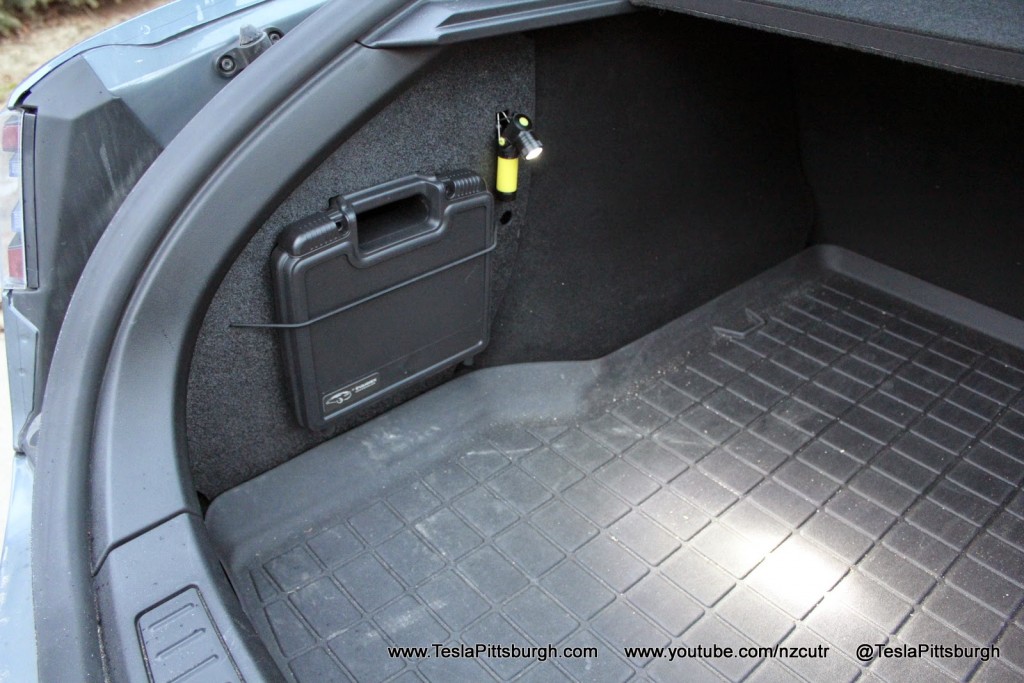DIY
Review: Tesla Model S Adaptable Storage and Lighting Kit (ASLK)
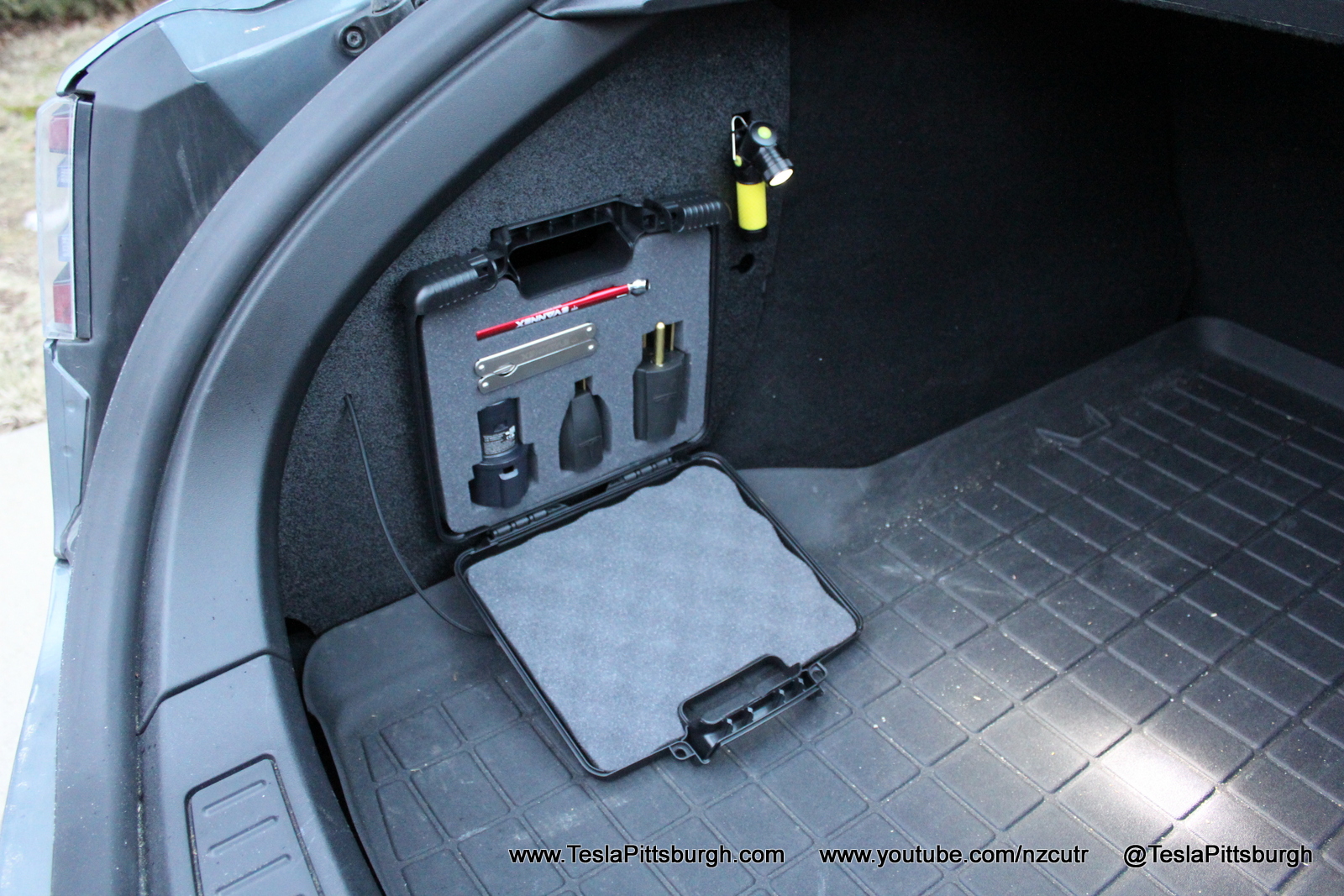
Buying holiday gifts has been getting harder and harder every year– not for the kids, but for the adults. We’re all capable and impatient enough to buy whatever we want, when we want it. So what do you get people who don’t leave anything on their wish list uncrossed off? For years it seemed we would panic buy various gift detritus like we’re on some kind of timed shopping game show– just so we have something to wrap and put under the tree– annoyed for the trouble of getting it there.
I think EVannex has found themselves with the same problem. Most of their offerings (like their downright superb CCI– which is leaps and bounds better than Tesla’s own) are innovative and class leading designs of quality that laid a foundation worthy of building a company on. I’ve written this review twice because I was so conflicted about the product. In the end, I think it is a viable offering and my high expectations were perhaps unreasonable at this price point. Moreover, its best selling point has been overlooked by EVannex… and I’m going to show it to you. However, there is no escaping the whiff of desperation.
EVannex Adaptable Storage and Lighting Kit
The Model S Adaptable Storage and Lighting Kit (ASLK) is a collection of pieces assembled to address a perceived problem: storing the charging adapters and lighting a very dark trunk. To solve this the ASLK uses a false trim panel to mount a plastic case and flashlight. Filling out the case are some accessory tools.
The trim panel is the biggest selling point of the kit. As advertised, It fits the space perfectly and is easy to install. The panel is just grained plastic, but from a few steps back it does a reasonable job of mimicking the trunk liner carpet. The panel is held in place by a couple bent tabs that you flex the panel to slide in behind the trunk’s trim. The panel probably had its flimsiness dictated by how much it had to flex to pop the tabs into place and though rugged, it does feel very coarsely made, like recycled dollar store toys. The top of the panel is kept pretty tight but the bottom is ridiculously loose. Sturdiness has been sacrificed on the altar of easy removal, especially when weighed down by a full adapter case. Don’t get me wrong, it won’t fall out of its place and I detected no rattling, but it protrudes just enough into the trunk that you can’t help but brush against it and bemoan its wobbliness.
The case itself is underwhelming. On mine the EVannex sticker refuses to live up to its name and no one will mistake this for a factory accessory. The foam inserts are perfectly shaped and cut for the tools and adapters– this is the high point of the ASLK– and made of a good quality foam. Each opening is specific to a particular Tesla UMC adapter, the NEMA 50, J1772 and standard plug. The case latches very securely and has loops for a lock but– let’s not kid ourselves– the case would be pulverized by a moderately sized boot heel.
Joining your adapters are some EVannex branded tools. Provided with the kit is a tire gauge and multi-tool. The tire gauge is an eye catching red and will read pressures up to 50 psi. It didn’t feel any more or less robust than other gauges I had so I did a test using all my other gauges. The results suggest the EVannex gauge is no better or worse than what I already had– none of which were what I would call expensive test instruments.
The multi-tool is another Leatherman knock off. Like all the other copies this one doesn’t match the heft or strength of the original. It features the typical assortment of tools and the action is good, tight enough to stay out but not hernia inducing to get out what you want. The Philips head screwdriver and flat head driver ends seem to be much fatter than they should be, but I didn’t find a Phillips screw I couldn’t turn. The fat end of the smaller flat head was definitely a problem fitting small screws and not much better than using the end of a dime if your last name is MacGyver, but nothing a Dremel couldn’t rectify. Likewise, I tried the saw blade on a small dead branch and concluded I would die of hypothermia if relying on it for anything other than fixing a snagged fingernail. Better to call Tesla Roadside Assistance.
The final piece to the ASLK puzzle is the clip-on flashlight. It’s small enough I was concerned it would be a watch-battery powered affair where replacing the whole unit is cheaper than new batteries. Thankfully it uses a standard AA battery to light up the LED and it is BRIGHT. The aluminum housing has a clip attached, is weatherproofed and with a rotating head.
With the panel popped into place, assembling the rest of the ASLK is simple. The case is loaded, latched, balanced into the opening and held there by an elastic cord (it will not stay there otherwise). There is a square hole in the panel where the flashlight is supposed to clip on but I found it impossible to attach directly. So I jammed on the clip first (where it will stay forever) and then I could easily mount and dismount the flashlight as needed.
Unlike a factory trunk light, this one requires you to click it on and off, obviously. Worth noting, this installation is fully compatible with the rear jumpseat-equipped cars and doesn’t impinge on elbow space.
RELATED: See our review of the trunk + frunk lighting kit for the Model S
The hidden feature that EVannex doesn’t advertise is what happens BEHIND the case. With the storage hole covered, there is a VAST space still available as the case doesn’t really extend back behind the panel. Though the valet mode in the upcoming 6.2 firmware update makes this less important (allowing the frunk and glovebox to be locked), the possibility remains that you could have a large out of sight and not immediately obvious space to stash expensive items. To really secure them you’d need to plug the opening between the central lower trunk as well, but there is a lot of potential for cleverness here. I would suggest an add-on lower panel would be worth EVannex’s consideration, but they’d need to hold the line on price.
All together, the kit looks pretty good. It does what it says it does– no more, no less. I do not think it rises to the level of quality and engineering that EVannex has spoiled us with before but at $119 the price is considerably less than other Tesla accessories. Fundamentally, the question becomes one of value. I did not believe at first the value was there, but I sought out comparables to see where the truth was and it softened my initial reactions. Everything except the trim panel is available on Amazon. The case is $30, the tire gauge is $6, the flashlight is $11, the multitool is hard to pinpoint but probably about $20 and that’s a total of $67.
If you believe the trim panel alone is worth $52, plus the custom foam inserts, then you have your answer– those are the only pieces actually unique to the EVannex Model S Adapter Storage and Lighting Kit. I happen to think that the value is there. It would take me a couple hours and a lot of messing around to make a panel of this unique shape and colored to match… and at my hourly rates, with my to-do list already long, the ASLK becomes a better choice and clearly EVannex hasn’t priced it unreasonably. The real question then becomes, do you need/want it. That’s a harder question to answer. When a heavy hitter comes up to bat you expect a home run from them and this– as it is sold now– is more of a bunt.
More about the author:
- Read more at www.TeslaPittsburgh.com.
- YouTube channel at www.YouTube.com/NZCUTR
- Follow me on Twitter

DIY
Tesla Model 3 pickup “Truckla” gets updates and a perfectly wholesome robot charger
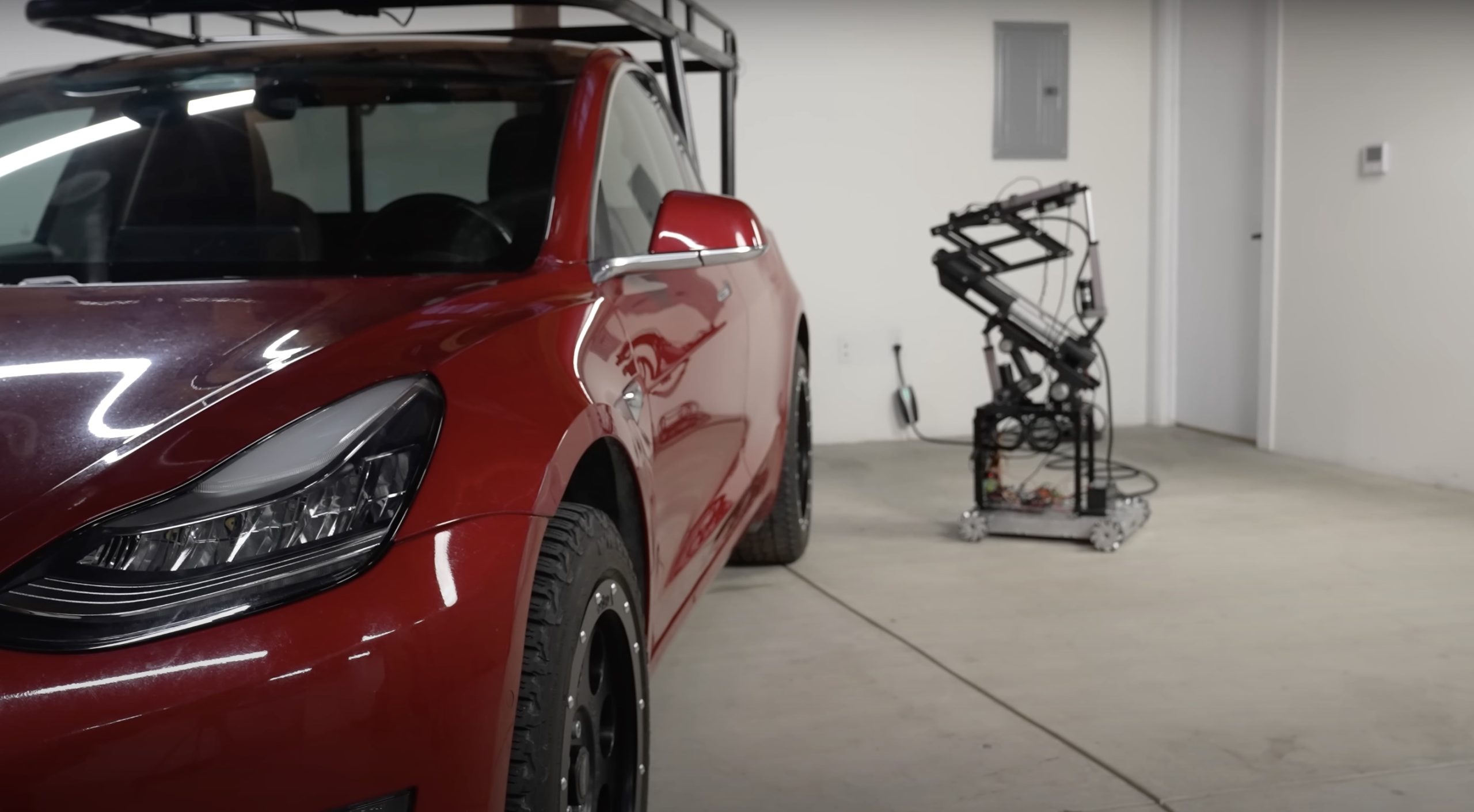
Back in 2019, YouTuber Simone Giertz, the self-proclaimed “Queen of Sh*tty Robots,” created a one-off Tesla Model 3 build that took the automotive world by storm. Fondly dubbed as “Truckla,” Giertz noted that the vehicle was actually her dream car — as crazy as that may sound.
Now almost four years later, the YouTuber posted an update on Truckla. And just like every other big project that one probably started, Giertz stated that she actually stopped working on Truckla when the vehicle was about 80% complete. The car is driving though, but a lot of stuff was not really working very well.
Thus, for her Truckla update, Giertz shared how most of her Model 3 pickup truck conversion was essentially completed. Truckla got a lot of detailing done, she got a slight lift, and she now has a functional tailgate. One has to admit, Truckla’s tailgate is pretty darn cool.
The “Queen of Sh*tty Robots” also opted to give Truckla a friend in the form of an automatic robot charger. Unlike Tesla’s rather interesting snake charger from years past, Truckla’s charger would come in the form of a rover, thanks to her friends at robotics platform Viam. Giertz aptly named Truckla’s robot charger friend “Chargela,” which is an appropriate name for such an invention.
Also true to form for Giertz, Chargela’s first encounter with Truckla was just a tiny bit awkward. One could say that Chargela may have just been a little bit nervous on his first try without human hands helping him. Most importantly, the system did work, so Giertz would likely keep using Chargela for her Model 3 pickup.
Teslas are very tech-heavy vehicles, so projects like Giertz’s Truckla are always remarkable. The fact that the Model 3 works perfectly fine despite having a good chunk of it cut off and turned into a pickup truck bed is mighty impressive any way one looks at it. Overall, Truckla will always be one of the coolest Tesla DIY projects to date, so any updates about the vehicle are always appreciated.
Truckla’s nearly four-year update can be viewed below.
Don’t hesitate to contact us with news tips. Just send a message to simon@teslarati.com to give us a heads up.
DIY
Tesla fan creating ‘CyberRoadster’ using Model 3 Performance parts in epic DIY build
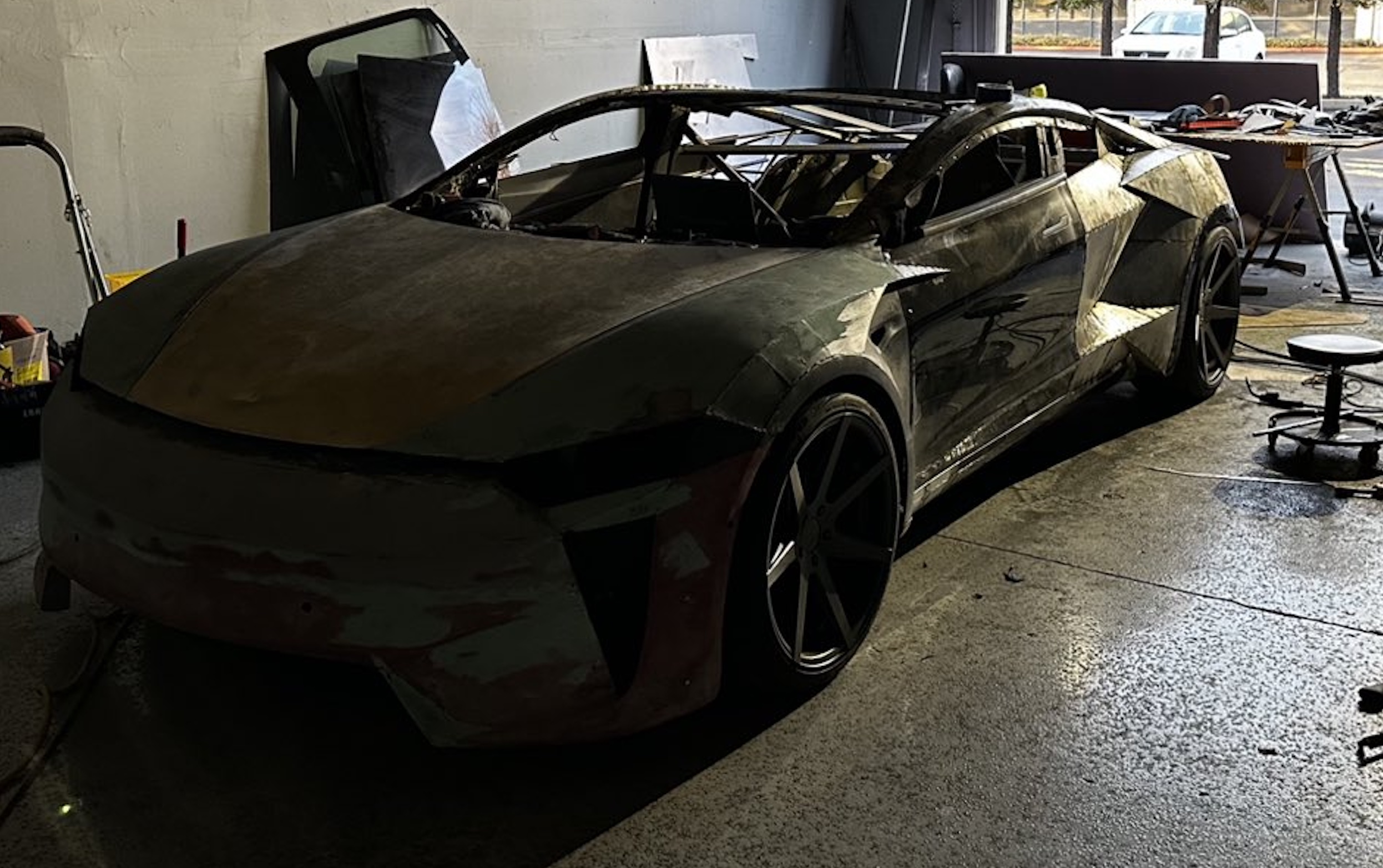
A Tesla owner is taking his hobby and love for electric vehicles to new levels by creating what could only be described as one of the coolest EV-related DIY projects to date. The idea for the project is simple: what happens when you cross a supercar with the Cybertruck? You end up with a two-seater CyberRoadster.
Tesla owner David Andreyev, who goes by the username @Cyber_Hooligan_ on Twitter, has spent the last few months creating a Cybertruck-inspired version of the next-generation Roadster made from a salvaged Model 3 Performance. Starting with a Model 3 Performance is an inspired choice, considering that it is Tesla’s first vehicle that has a dedicated Track Mode.
A look at Andreyev’s YouTube channel, which can be accessed here, shows the meticulous build that the Tesla owner has implemented on the project car. What’s particularly cool about the CyberRoadster is the fact that it’s being built with parts that are also from other Tesla vehicles, like its front bumper that came from a new Model S. Recent videos suggest that the project car’s rear bumper will be from a new Model S as well.
The journey is long for Andreyev, so the completion of the CyberRoadster will likely take some more time. Despite this, seeing the Tesla owner’s DIY journey on such an epic build is more than satisfying. And considering that the CyberRoadster is evidently a labor of love from the Tesla owner, the final results would likely be extremely worth it.
There’s a lot of crazy Tesla modifications that have been done as of late. But some, as it is with a lot of things on the internet these days, have become more silly gimmicks than serious automotive projects. Fortunately, car enthusiasts like Andreyev, who just happen to also love electric vehicles, are taking it upon themselves to create one-of-a-kind EVs that would surely capture the attention of anyone on the road.
Check out the latest video in the CyberRoadster’s creation below.
Don’t hesitate to contact us with news tips. Just send a message to simon@teslarati.com to give us a heads up.
DIY
Tesla owner ‘charges’ Model 3 with homemade solar panel trailer
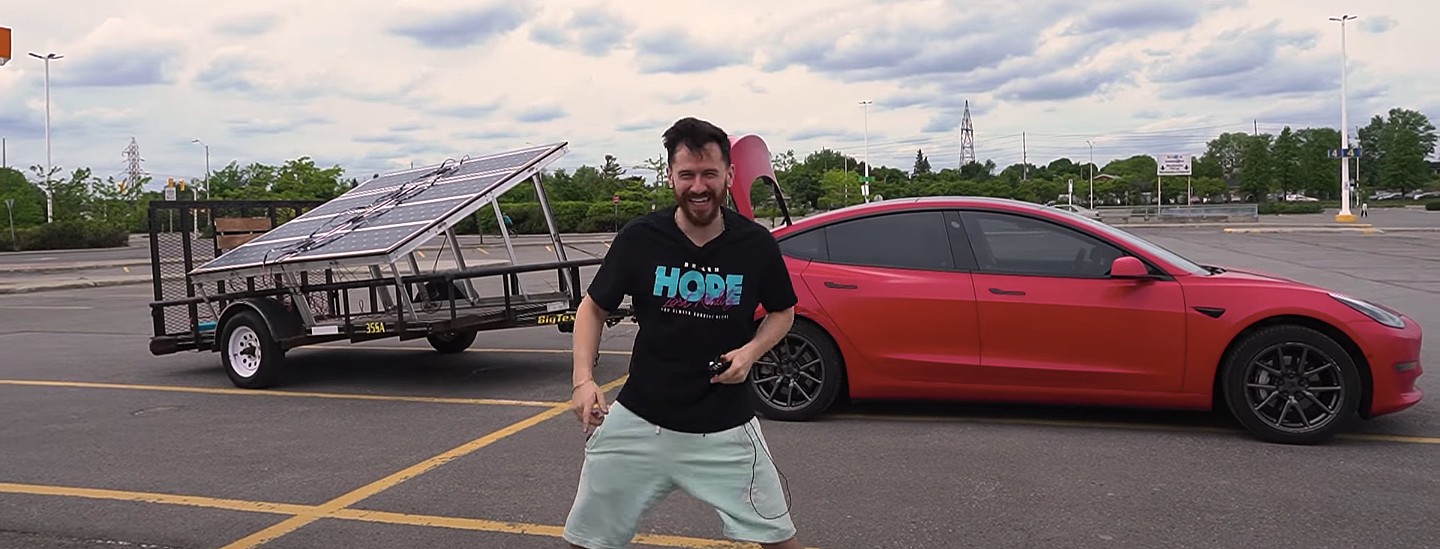
A Tesla owner has demonstrated a rather novel way to charge his Model 3. In a recent video, Sean Callaghan of the ItsYeBoi YouTube channel opted to use a series of off-the-shelf solar panel sheets onto a towable trailer to create a mobile charging unit for his all-electric sedan.
Callaghan planned to use only the sun and the solar sheets purchased from e-commerce platform Wish to charge his Model 3. The solar panel sheets would collect energy from the sun and transfer it to a control panel. The control panels were connected to batteries that would hold the energy—the batteries connected to an inverter, which would then charge the Tesla Model 3.
The entire assembly would provide the Model 3 with about 800 watts of energy on a completely sunny day. However, Callaghan shot the video when weather was overcast, so the entire solar panel trailer build only managed to provide around 300 watts throughout the YouTube host’s test.
To put this into perspective, a 100 volt home wall outlet provides 1.4 kilowatts of power, or 1,400 watts. Therefore, the 300-watt solar panel assembly built by Callaghan was producing less than 25% of the energy of a typical wall outlet. This is pretty marginal compared to Tesla’s 250-kilowatt V3 Superchargers, which provides 250,000 watts, or about 833 times as much power as the makeshift solar panel build.
However, Callaghan’s goal was not to charge the vehicle quickly. He explained the idea came from a previous video where he used a $5,000 Wish-purchased wind turbine to charge his Model 3. He wanted to test the effectiveness and efficiency of the system, which was questionable due to the time it would take to charge the battery fully.
The Model 3 battery pack is 78 kWh, and with Callaghan’s 300-watt system charging his electric vehicle, it would take 260 hours to supply the Tesla’s battery to full capacity.
In the past, electric vehicle enthusiasts have asked Tesla CEO Elon Musk why the company’s vehicles do not contain solar glass roofing, which would charge the car while the owner is driving. Musk has explained that the efficiency of this idea is challenging and likely would not provide an ample amount of range.
When asked about the idea of putting solar panels on the top of Tesla’s vehicles in 2017, Musk responded that the idea was “Not that helpful, because the actual surface of the car is not that much, and cars are often inside. The least efficient place to put solar is on the car.” It also would not be cost-effective for Tesla because “the cost of the panels and electronics, R&D and assembly would never pay for itself in the life of the vehicle, compared to charging from the wall in your garage,” Quartz noted.
That being said, Tesla plans to implement solar panels onto the motorized tonneau of the upcoming Cybertruck. The idea was discussed on Twitter when Musk stated that the optional feature would add “15 miles per day, possibly more” when parked in the sunlight. Also, fold-out solar wings could help capture enough solar energy for 30 to 40 miles a day.
Watch Sean Callaghan’s video of his makeshift solar panel trailer below.
